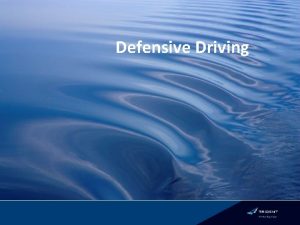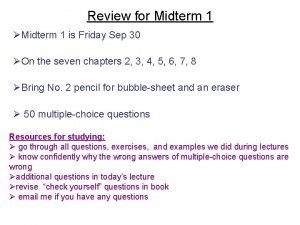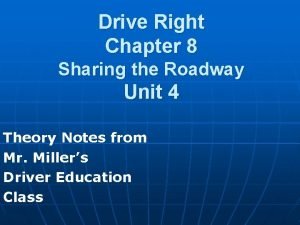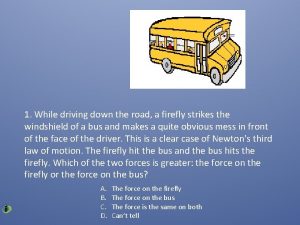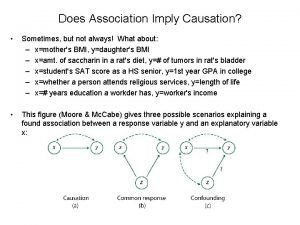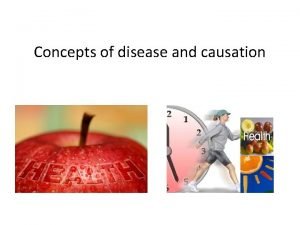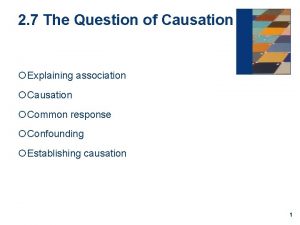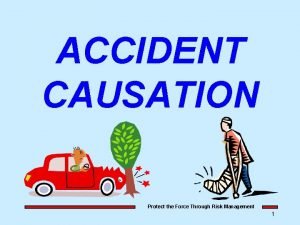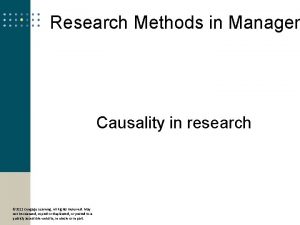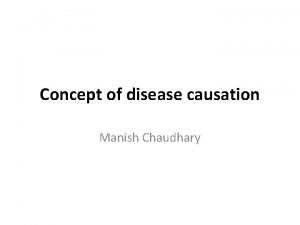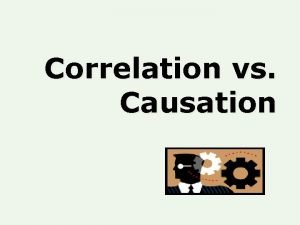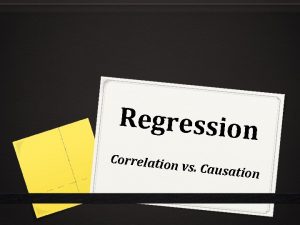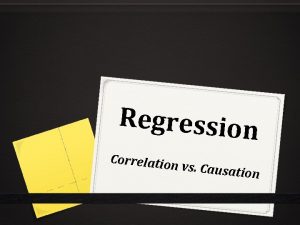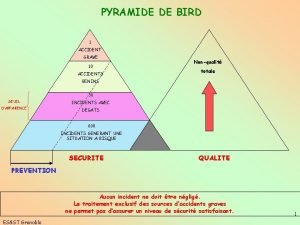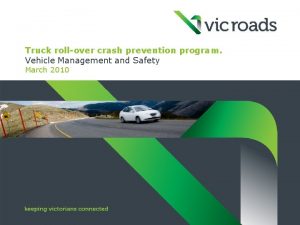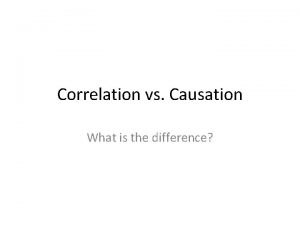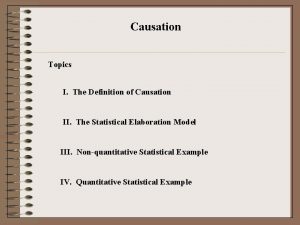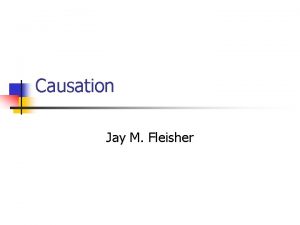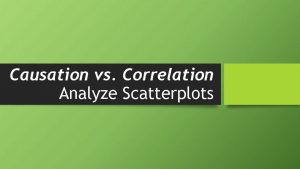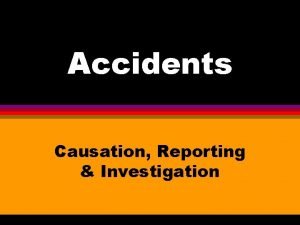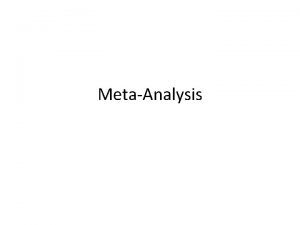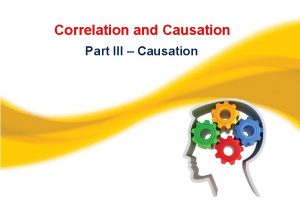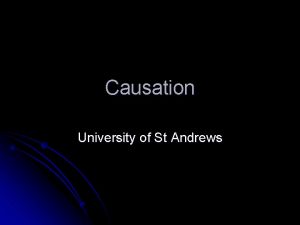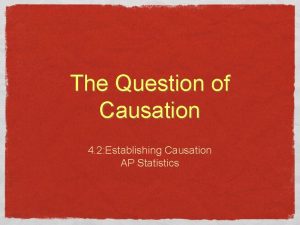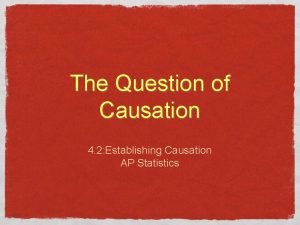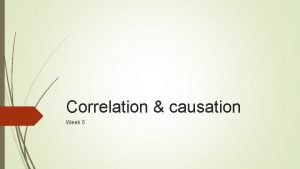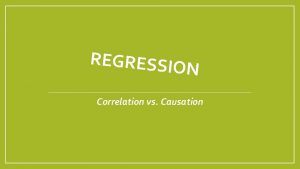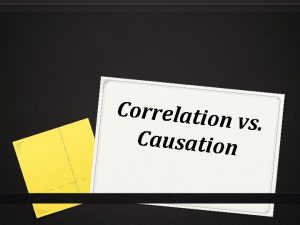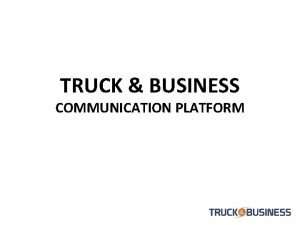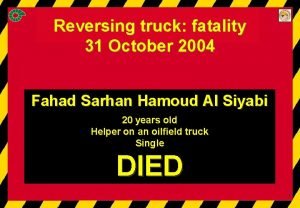Large Truck Crash Risk Causation Prevention Ronald R





![Naturalistic Driving (Instrumented Vehicle) Study Near-Crash [Naturalistic Driving Video Clip] Naturalistic Driving (Instrumented Vehicle) Study Near-Crash [Naturalistic Driving Video Clip]](https://slidetodoc.com/presentation_image/6c6e98bb9584809819a82597ecfd482a/image-6.jpg)









![Crash Example [Naturalistic Driving Video Clip] Crash Example [Naturalistic Driving Video Clip]](https://slidetodoc.com/presentation_image/6c6e98bb9584809819a82597ecfd482a/image-16.jpg)













- Slides: 29

Large Truck Crash Risk, Causation, & Prevention Ronald R. Knipling, Ph. D. Safety Consultant & Trainer Arlington, Virginia, USA rknipling@verizon. net www. safetyforthelonghaul. com IRU Academy FADEEAC International Conference Buenos Aires, Argentina -- April 5, 2011

Today’s Topics • Crash risk – High-risk drivers – High-risk road conditions • Proximal (immediate) crash causes • The “Crash Trifecta” • Driver & management training • Vehicle-based safety technologies • Active carrier safety management.

Multiple Interacting Factors & Causes

Crash Risk Factors • Risk Factors: – Driver: • Enduring • Temporary – Vehicle – Roadway/Environment • Proximal Causes: – Driver – Vehicle – Roadway/Environmental

Crash Risk Factors Driver Factors: Other Factors: Enduring driver traits; e. g. , Vehicle deficiencies; e. g. , • Age • Personality (e. g. , aggressive, impulsive) • Risk perception & attitudes • Medical conditions Temporary driver states; e. g. , • • Prior sleep Circadian rhythms Moods Medications & drugs • Brakes • Tires • Lighting Roadway; e. g. , • Undivided roads • Dense traffic • Curves
![Naturalistic Driving Instrumented Vehicle Study NearCrash Naturalistic Driving Video Clip Naturalistic Driving (Instrumented Vehicle) Study Near-Crash [Naturalistic Driving Video Clip]](https://slidetodoc.com/presentation_image/6c6e98bb9584809819a82597ecfd482a/image-6.jpg)
Naturalistic Driving (Instrumented Vehicle) Study Near-Crash [Naturalistic Driving Video Clip]

Truck Naturalistic Driving Data on At-Fault Traffic Conflicts of 95 Drivers Driver Risk Frequency Distribution Number of Drivers (N = 95) 60 Skewed Distribution: Many good drivers but a few bad & very bad drivers 50 40 30 20 10 0 0 0. 1 to 3 3. 1 to 6 6. 1 to 9 9. 1 to 12 At-Fault Traffic Conflicts Per 100 Hours Driving 12+

High- & Low-Risk CMV Drivers Risk Odds Ratio = 4. 9

Safety Manager Survey Results: Driver Factors Associated with Risk 1. Aggressive/angry Personality & 2. Impatient/impulsive Risk Attitudes 3. Inattentive 4. Inexperienced (new driver) 5. Unhappy with job/company 6. Young (< 25) 7. Sleep disorder; e. g. , sleep apnea 8. Unhappy marriage/family 9. Debt/financial problems 10. Medical condition; e. g. , heart

Multiple Interacting Factors & Causes

Relative Exposure & Risk: Undivided & Divided Highways Undivided 10% 38% Divided 90% 62% Odds ratio = 5. 3 Exposure Traffic Conflicts Other high-risk roadway conditions include dense traffic & work zones

High-Risk Road Locations & Conditions • Single-vehicle crashes: – Narrow roads – Curves – Ramps • Multi-vehicle crashes: – Undivided roads – Heavy traffic – Work zones: • ~13% of serious crashes • <1% of driving exposure • Risk increase > 20 X

Large Truck Crash Causation Study (LTCCS) Percentages for Truck At-Fault Crashes CR Category Examples Driver Physical Failure • Asleep-at-the-wheel • Heart attack • Other physical impairment 12% Driver Recognition Failure • Inattention • Distraction (internal or external) • “Looked but did not see” 30% Driver Decision Error • Too fast for conditions • Following too closely • Misjudgment or false assumption 40% Driver Response Execution Error • Overcompensation • Poor vehicle control/maneuvering • Panic/freezing 6% Vehicle Failure • Brake failure • Tire failure • Cargo shift Roadway/ Environment • Road signs/signals missing • Road design • Weather and/or slick roads DRIVER ERROR = 88%!!! % 10% 2%

Convergence of Events Causing Crashes Adapted from Reason (1990) and Short et al. (2007).

Crash “Tri-Fecta” Frequently Seen in Crashes & Near-Crashes 1. Misbehavior: Unsafe pre-event behavior 2. Mistake: Transient driver inattention 3. Unexpected traffic event.
![Crash Example Naturalistic Driving Video Clip Crash Example [Naturalistic Driving Video Clip]](https://slidetodoc.com/presentation_image/6c6e98bb9584809819a82597ecfd482a/image-16.jpg)
Crash Example [Naturalistic Driving Video Clip]

Collision Warning Systems • Forward Collision Warning (with Adaptive Cruise Control) • Side Object Detection (Lane Change/Merge Warnings) • Lane Departure Warning • Backing Collision Warning (Rear-Object Detection) Courtesy Iteris, Inc. 17

IVBSS Collision Warning Systems; e. g. , Side Object, Forward, & Lane Departure Integrated Vehicle-Based Safety System (IVBSS) Truck Configuration

Large Truck Safety Technologies: Estimated Returns On Investments (ROIs)* Vehicle-Based Crash Avoidance System Estimated 5 -Year ROI per $1. 00 Forward Collision Warning $4. 28 Lane Departure Warning $3. 96 Roll Stability Control $5. 51 * FMCSA Benefit-Cost Analysis of Onboard Safety Systems. Tech Brief No. FMCSA-RRT-09 -023 based on ATRI research. February 2009. 19

Carrier safety manager: the most important person in truck safety! • • Driver selection Training Evaluation Behavioral management: – Rewards – Discipline & remediation • Vehicle technologies & maintenance • Risk avoidance; e. g. , dispatching & routing.

Safety Management: Comprehensive and Targeted Principal Target for Improved Safety

KSA (Knowledge, Skill, Attitude) 3 -Legged Stool: Basic Elements of Driver Behavior & Training Attitudes: (a)Hard to change (related to personality) (b)Often lead to worst crashes

Carrier Safety Manager Training & Development Safety Knowledge: Supervisory Skills: • • • • • Regulatory compliance Crash risk factors Crash causes Crash investigation Vehicle maintenance Safety technologies Driver selection Driver training Driver fatigue, scheduling & dispatching • Behavioral safety management. Planning Controlling Problem solving Monitoring performance Training & coaching Rewarding & disciplining Managing time Oral communication Written communication Self-development Representing company.

What motivates carrier safety? Safety Culture Study Carrier Survey Results 1. 2. 3. 4. 5. 6. 7. Reduce crashes & injuries Set high industry safety standard Decrease insurance costs Avoid costly lawsuits Avoid enforcement penalties Attract & retain drivers Attract & retain customers. * Short, J. et al. Synthesis 14: The Role of Safety Culture in Preventing CMV Crashes. TRB Truck & Bus Synthesis Program, 2007.

The Business Model of Truck Safety Business Benefits of Safety: • • Reduced costs Improved productivity Enhanced quality Improved employee: – – Relations Morale Retention Off-the-job safety awareness • Better organizational image • Organizational pride.

Freight Revenue Needed to Compensate for Crash Loss Company Profit Margin: Crash Loss: 1% 3% 5% $1, 000 $100, 000 $33, 000 $20, 000 $25, 000 $2. 5 Million $833, 000 $500, 000 $1 Million $100 Million $33. 3 Million $20 Million

Compliance with Regulations PLUS Active “Beyond Compliance” Carrier Management

Safety for the Long Haul Large Truck Crash Risk, Causation, & Prevention • Publisher: ATA • 13 chapters encompassing: – – – Basic crash concepts Risk Causation Countermeasures Safety management National policy. • Target audiences: – Carrier safety managers – Government & industry officials – Students • Availability: www. atabusinesssolutions. com/

Thanks for your attention! Ron Knipling (703) 533 -2895 rknipling@verizon. net www. safetyforthelonghaul. com Website information & downloads: • Book overview & detailed outline • Training seminar information • Crash & risk analysis guide • Publications: – Safety management reports – Safety research – Articles on truck safety • Presentations.
 Primary prevention secondary prevention tertiary prevention
Primary prevention secondary prevention tertiary prevention Wheel model epidemiology
Wheel model epidemiology Proximate causes vs ultimate causes
Proximate causes vs ultimate causes Animal behavior biology
Animal behavior biology Ddc collision prevention formula
Ddc collision prevention formula A large heavy truck and a small baby carriage
A large heavy truck and a small baby carriage Drive right chapter 8
Drive right chapter 8 While driving down the road a firefly
While driving down the road a firefly Market risk assessment
Market risk assessment Proximate behaviour in animals
Proximate behaviour in animals Konsep penyebab penyakit
Konsep penyebab penyakit Periferico ap human geography
Periferico ap human geography Association and causation
Association and causation Model of disease causation
Model of disease causation Causation in criminal law
Causation in criminal law Association and causation
Association and causation Modern accident causation model
Modern accident causation model Reverse causation examples
Reverse causation examples Leq
Leq Analysis and reasoning leq
Analysis and reasoning leq Temporal relationship epidemiology example
Temporal relationship epidemiology example Causation of disease
Causation of disease Correlation mistaken for causation
Correlation mistaken for causation Correlation vs causation worksheet
Correlation vs causation worksheet Correlation vs causation
Correlation vs causation Contoh triadic reciprocal causation
Contoh triadic reciprocal causation How long is an leq
How long is an leq World history
World history Pyramide des risques
Pyramide des risques Psychological theory of criminal behavior
Psychological theory of criminal behavior




